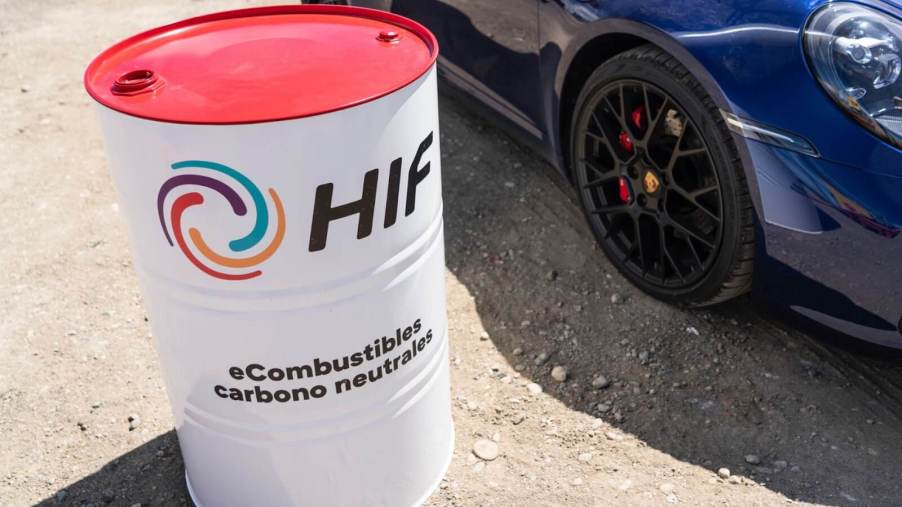
How Synthetic Fuel is Saving the Combustion Engine
Let’s face it. The world is changing. EVs aren’t just the pet project of a few far-flung startups anymore. They’re here, they’re good, and their popularity is growing. Much like the Carpocalypse of the last decade, gas-powered cars are dying a slow death in the face of more popular, practical options. And while EVs have their growing pains, the fact is that the future of cars is electric. Or is it? With synthetic fuels like the gasoline Porsche is cooking up, the combustion engine may be viable for longer than we think.
Donut Media visits Porsche’s synthetic fuel factory in Chile
Porsche is one of the key players in the synthetic fuel game. With its Chilean operation, the brand from Stuttgart is creating synthetic fuels using nothing but water and air. That may seem like a conspiracy theory from the 70s, but it isn’t. In a recent video from Donut Media, details about just how Porsche makes its synthetic fuel shed light on how it works.
Car fuel made from water and air?

At the end of the day, the gasoline we use in our cars today is a simple molecule of hydrogen and carbon. With today’s scientific advancements, synthesizing compounds is as easy as it’s ever been. That’s not to say that making synthetic fuels is a cakewalk. However, it is easier to do than one may initially imagine.
To start, Porsche scientists needed rich sources of both hydrogen and carbon. Naturally, both of those elements are easy to find in our water and air. Through a process called electrolysis, the water molecule separates into hydrogen and oxygen atoms. The oxygen goes back into the atmosphere, while the hydrogen remains for step two.
Things get a touch more complex here. The end goal is to use an air collection device to capture CO2 from the atmosphere. Then, it will separate it into its individual elements. That device isn’t quite ready for the type of volume that Porshe requires, so for now they ship in the critical compound.
Once the CO2 is collected, it goes through a series of heaters and solvents to break apart the Carbon and Oxygen atoms. Once again, it expels clean Oxygen, and the Carbon stays behind for further processing.
Now that the Carbon and Hydrogen are isolated, they go through a complex process of refinement to create methanol. And while that is undoubtedly a potent fuel, it still needs further refinement to become functional gasoline.
The result is heavy and light gasoline that are then blended to create a high-octane fuel. Not only does this fuel work, but it’s identical to the premium fuel found in gas pumps today.
Identical in more than just function

According to Porsche, not only does their synthetic fuel function like regular gasoline, but it is the exact same compound as gasoline. That means it will burn the same way, is perfectly safe for today’s engines. Even better, it’s completely carbon neutral.
How is synthetic gasoline carbon neutral?
In this case, carbon neutrality is a bit of a marketing ploy; however the statement isn’t entirely untrue, either. Because the tailpipe emissions from synthetic fuel are the same as the CO2 that goes into making it, this gasoline is technically carbon neutral.
This assumes no transportation and a production facility running entirely on renewable energy, which may be a pain point when this stuff goes mainstream. However, the fact truly functional gasoline can come from nothing but water and air is a good sign for the future of combustion engines.



